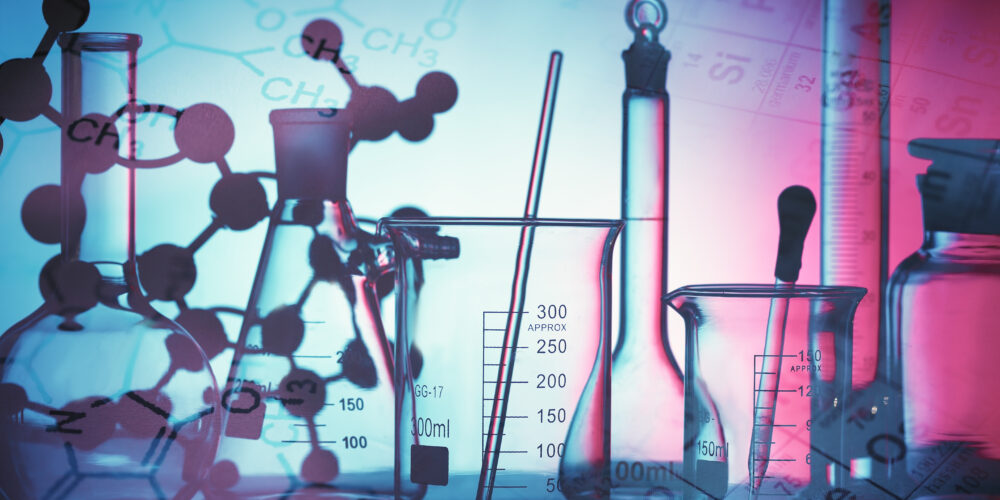Introduction
The extent to which a compound distributes itself when placed in a biphasic system (e.g. octanol-water) is a physicochemical property measurement relevant across a wide range of industries.
Cyprotex focuses on lipophilicity measurements that are aligned to drug discovery.
Cyprotex offers three distinct techniques : shake-flask, CHI and potentiometry. The details for the first two techniques are summarized below; the latter is supported via our wider Evotec business or via an external partner. Get in touch with us to discuss your project.
Protocol
Protocol for Cyprotex's Lipophilicity Services
Q&A
When should I perform lipophilicity assessments?
Lipophilicity is a physicochemical parameter considered during the early stages of drug discovery as part of hit-to-lead compound filters or for developing structure activity relationships to guide Medicinal Chemistry campaigns.
Why is it important to assess lipophilicity?
A lipophilicity measurement can often reflect the favorable, entropic-driven, standard change in Gibbs free energy that is associated with a reversible-equilibrium biological process (e.g. binding between a ligand and a receptor). Linear free energy relationships between the equilibrium constant for such biological processes and lipophilicity are common place, and the multi-parameter optimization activities performed by Medicinal Chemistry often focus on modulating lipophilicity1. Additionally, to understand the influence of intramolecular hydrogen bonds the comparison of lipophilicity measurements in different biphasic systems can provide insight into the chameleonic properties of certain molecules.2
How do I measure lipophilicity by LogD shake flask?
Lipophilicity measurements are routinely determined in an octanol-water biphasic system, although alternate biphasic systems include cyclohexane-water, toluene-water and liposome-water2,3. Such measurements are referred to as a distribution coefficient (D) and are usually reported on a logarithmic base-10 scale (i.e., log10D); reflecting the ratio of the compound concentration in each phase. If a compound is able to act as an acid, base, zwitterion or has the characteristics of a more complex amphoteric substance then a lipophilicity measurement will be influenced by the pH of the water phase, and log10D values must be contextualized against the pH that the measurement is conducted. Therefore, the water phase is an aqueous buffer with a particular pH, usually pH 7.4 is used but alternate pHs are applicable in certain circumstances4. It is important to note that the log10D of such compounds is a function of a compounds ionization profile and measurements will also be influenced by the buffer components and the buffer’s ionic strength5. For compounds that have no ionization profile or are essentially un-charged at the pH measured then the distribution coefficient can also be referred to as a partition coefficient (P), which is similarly reported on a logarithmic base-10 scale (i.e., log10P). Relatedly, an ionization profile details the varying acid dissociation constants that a compound may have across a particular pH range, typically pH 1 to 14. An acid dissociation constant (Ka) is usually reported on a negative logarithmic base-10 scale (i.e., -log10(Ka)), and referred to as a pKa. Lipophilicity and ionization profiles are linked and there are theoretical equations that relate a compound’s D to its P and, if relevant, varying pKas. Usually, a compound’s log10P can be determined by performing a series of shake-flask log10D measurements at multiple pHs or by using a potentiometric technique6.
What other methods can be used to measure lipophilicity?
Lipophilicity measurements usually involve the distribution of a solubilized compound between two liquid phases, but it is possible to use liquid chromatographic methods that permit the determination of lipophilicity of a compound by its retention to a chromatographic column solid phase.7 This approach is referred to as chromatography hydrophobicity index (CHI) measurement. Importantly, a CHI measurement is not a direct replacement for a D (or a P) determined in a biphasic system but they can be highly linearly correlated, albeit possibly systematically biased (e.g. due to hydrogen-bond acidity).8 CHI measurements can be viewed as a related but alternate lipophilicity scale to that of an octanol-buffer biphasic system scale. However, these former methods have significant technical advantages over the more traditional shake-flask or potentiometric approaches used for the latter. Furthermore, different chromatographic column solid phase chemistries can offer alternate biomimetic measurements for other in vitro endpoints (e.g. human albumin binding).
Through the wider Evotec family, Cyprotex can also offer an experimental polar surface area (EPSA) method. The EPSA method provides insight into solvent–based molecular conformational changes and intra-molecular H-bonds using supercritical fluid chromatography (SFC) based on the Goetz et al method.9
How do you maintain quality in the LogD shake flask method?
Our shake-flask method can support either a DMSO or solid starting form, is run at ambient temperature and can support different lipid phases and variable buffers; it is aligned to a more traditional method used within drug discovery. The most critical stage of such a measure involves the phase separation and our approach uses a centrifugation step followed by manual pipette sampling of each phase to minimize cross-contamination. By employing a calibrated UPLC-MS/MS endpoint along with varying aqueous-phase dilutions, the assay’s dynamic range, in theory, can cover five orders of magnitude (providing that the compound’s MS response is suitable).
What are the advantages of the CHI assay?
Our CHI assay is unique in that it has been designed to handle very large requests (up to 2500/week/client). It is ECHO compatible (i.e., acoustic dispensing) working from DMSO compound stocks and can handle multiple pH measurements (e.g., pH 2.6, 7.4 and 10.5) using different UPLC eluents. In addition, it incorporates a state-of-the-art UPLC-HRMS endpoint permitting measurements to be performed in large cassettes sizes, with each cassette also containing the calibrants that cover approximately 6 orders of magnitude. The measured CHI values can be converted into a CHI LogD at a particular pH using a standard linear regression conversion; and if measurements are performed at 3 or more pHs, covering an appropriate pH range, then a CHI LogP and charge type estimate can be made. This CHI method opens up related lipophilicity measurements (i.e., CHI logD) at multiple pHs, and where possible CHI logP and charge type estimates, for a much larger number of compounds in much shorter time frames.
References
1) Hansch C, Leo A. Exploring QSAR: fundamentals and applications in chemistry and biology. Heller SR (ed). American Chemical Society, Washington; DC; 1995
2) Shalaeva M, Caron G, Abramov YA, O’Connell TN, Plummer MS, Yalamanchi G, Farley KA, Goetz GH, Philippe L, Shapiro MJ. Integrating intramolecular hydrogen bonding (IMHB) considerations in drug discovery using ΔlogP as a tool. J. Med. Chem. 2013, 56, 4870−4879
3) Austin RP, Davis AM, Manners CN. Partitioning of ionizing molecules between aqueous buffers and phospholipid vesicles. J. Pharm. Sci. 1995, 84, 1180-1183
4) Wenlock MC, Barton P, Luker T. Lipophilicity of acidic compounds: Impact of ion pair partitioning on drug design. Biorg. Med. Chem. Lett. 2011, 21, 3550-3556
5) Wenlock MC, Potter T, Barton P, Austin RP. A method for measuring the lipophilicity of compounds in mixtures of 10. J. Biomol. Screen. 2011, 16, 348-355
6) Kah M, Brown CD. LogD: lipophilicity for ionisable compounds. Chemosphere, 2008, 72, 1401-1408
7) Valkó K, Bevan C, Reynolds D. Chromatographic hydrophobicity index by fast-gradient RP-HPLC: a high-throughput alternative to log P/log D. Anal. Chem. 1997, 69, 2022-2029
8) Valkó K, Du CM, Bevan C, Reynolds DP, Abraham MH. Rapid method for the estimation of octanol/water partition coefficient (Log Poct) from gradient RP-HPLC retention and a hydrogen bond acidity term (Sigma alpha2H). Curr. Med. Chem. 2001, 8, 1137-1146
9) Goetz GH, Shalaeva M, Caron G, Ermondi G, Philippe L. Relationship between passive permeability and molecular polarity using block relevance analysis. Mol. Pharmaceutics 2017, 14, 386-393
Downloads
- Cyprotex ADME Guide 5th Edition >
- Cyprotex Physicochemical Profiling Service Sheet >
- Cyprotex LogD Shake Flask Factsheet >
- Cyprotex pKa and logP Factsheet >

